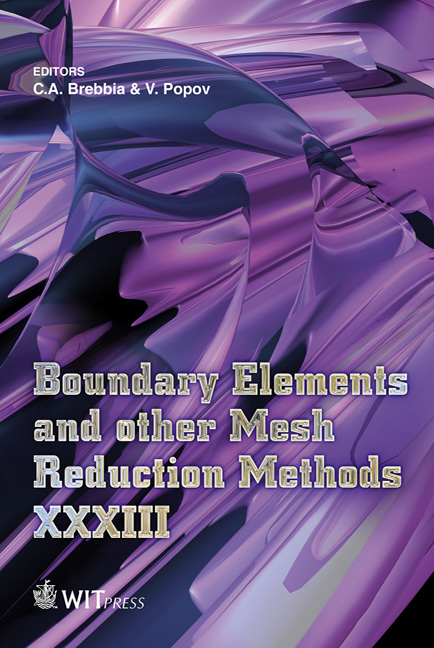A Multi-domain Boundary Element Analysis Technique Based On A Row Elimination-backsubstitution Method For Solving Large-scale Engineering Problems
Price
Free (open access)
Transaction
Volume
52
Pages
11
Page Range
153 - 163
Published
2011
Size
1112 kb
Paper DOI
10.2495/BE110141
Copyright
WIT Press
Author(s)
X.-W. Gao & J.-X. Hu
Abstract
This paper presents a novel analysis technique using the multi-domain boundary element method (MDBEM) to solve large-scale engineering problems. Firstly, boundary integral equations for solving general heat conduction and mechanics problems are presented, which are established for a single medium and are formulated in terms of physical quantities at internal, boundary and interface points. Then a sparse system of equations formulated in terms of only interface nodal quantities is assembled based on the three-step variable condensing technique. Finally, a robust linear equation solution method is presented for solving the sparse system based on a row elimination-back-substitution method (REBSM). Combining REBSM and MDBEM makes the boundary element method more efficient for solving large practical engineering problems. A numerical example is given to demonstrate the efficiency of the proposed method. Keywords: multi-domain boundary element method, Gaussian elimination method, row elimination-back-substitution method, sparse system of equations. 1 Introduction The boundary element method (BEM) is another extensively used numerical tool in solving engineering problems after the development of the finite element method (FEM). Apart from usual advantages mentioned in references (e.g., [1]), a few important advantages of BEM over FEM can be figured out as: 1) only
Keywords
multi-domain boundary element method, Gaussian eliminationmethod, row elimination-back-substitution method, sparse system of equations





